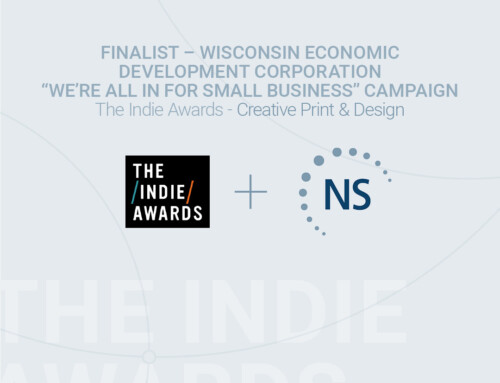Update: According to Sirius Decisions “Tracking the True Costs of Marketing 2016” report, companies of all sizes have increased marketing investment as a percentage of revenue, and the role of systems, tools & outsourced services is expanding. What this means to us is that marketing is no longer a cost center; CMOs are under more pressure than ever to accelerate business performance. But the game has changed, and you can’t win by playing by the old rules. You need to have the courage to inspire others to join you.
At Nelson Schmidt, our independence gave us the courage to explore a new marketing approach that taps into the similarities between the journeys customers take for complex B2B and B2C purchases. We’ve shed the antiquated and artificial approach of applying these concepts with uniformity and instead ask, “is my product or service an impulse buy or a considered purchase?” We call this new approach considered purchase marketing. And that’s what makes us courageously independent.
Read on for more insights.
Having worked closely with business-to-business (B2B) marketers for decades, we’re particularly attuned to the ongoing “B2B vs. B2C” debate.
That’s why a recent article in CMO Essentials caught my eye. The author points out that thinking about B2B or B2C in a silo is a missed opportunity for marketers. Instead, she says, we need to expand our thinking and adopt a B2B2C approach to have more meaningful conversations and engage the customer.
Her point is that we need to “embrace a more open paradigm” to maximize and optimize opportunities for growth, and we couldn’t agree more. In fact, I’d go as far to say that the comparison of B2B to B2C or even B2B2C has become entirely irrelevant. We’ve evolved beyond that.
At Nelson Schmidt we’ve shifted the paradigm from “silos” to “commonalities” to enable this evolution to a broader, more inclusive approach. We call it considered purchase marketing. Our perspective is to focus the discussion and discipline around the purchase journey rather than the product or service category. This creates the opportunity for us to focus more on the end customer, gain better insight, modernize the marketing mix and use data and analytics more effectively to influence the brand choice and purchase decision more directly.
CMO insights
As we explore this new paradigm, we’re harvesting evidence to back up our perspective. That’s why we’re speaking with CMOs across B2B and B2C brands to better understand the needs and challenges they face, and validate the considered purchase marketing approach.
The marketing leaders we spoke with have confirmed many of our core assumptions. Here are just a couple observations shared with us by CMOs:
“It’s certainly been an evolution for us. For decades we were exclusively a company that sold through distribution. And we basically depended on our distributors to sell our product to the marketplace. Whether it’s been through market changes, the impact of digital technology or a need for growth and expansion, we’re seeing not just a blurring of the lines between B2B and B2C, but a meshing of the two together around the end customer.”
“There’s a recognition that as B2B and B2C philosophies mesh together, we’re talking to a broader audience – people that you previously would not have thought about. So that drives a bit of complexity, and it requires a skill set change and a mindset change.”
Data is the key
Ultimately, access to data is the key as marketers examine all facets of the end customer journey including the sales channels they use and take a more holistic approach to marketing. Understanding these multiple audiences and their rational and emotional mindsets is a critical piece of the puzzle for considered purchase marketers who seek to intersect with these buyers on a long, complex journey to purchase.
One CMO pointed out that while data may be abundant on the consumer side, it can be more challenging for marketers on the commercial side:
“Generally speaking, on the consumer side there’s easy access to a lot of information about the market, consumer and product choices. On the commercial side, at least in our industry, there’s less access to this data for us as marketers as well as for the end customer.”
Considered purchase marketing
What does all of this mean for brands? Put simply, throw out your old playbook on B2B or B2C marketing. Instead, focus on your end customer journey and understand where, as marketers, you can directly and indirectly influence their purchase decision through every available channel. Use data to map and measure that increasingly complex journey and intimately understand the mindset of all your audiences. And work with a partner who understands this new paradigm and can help you navigate the waters to take your brand to new levels.
Originally Published 2016






